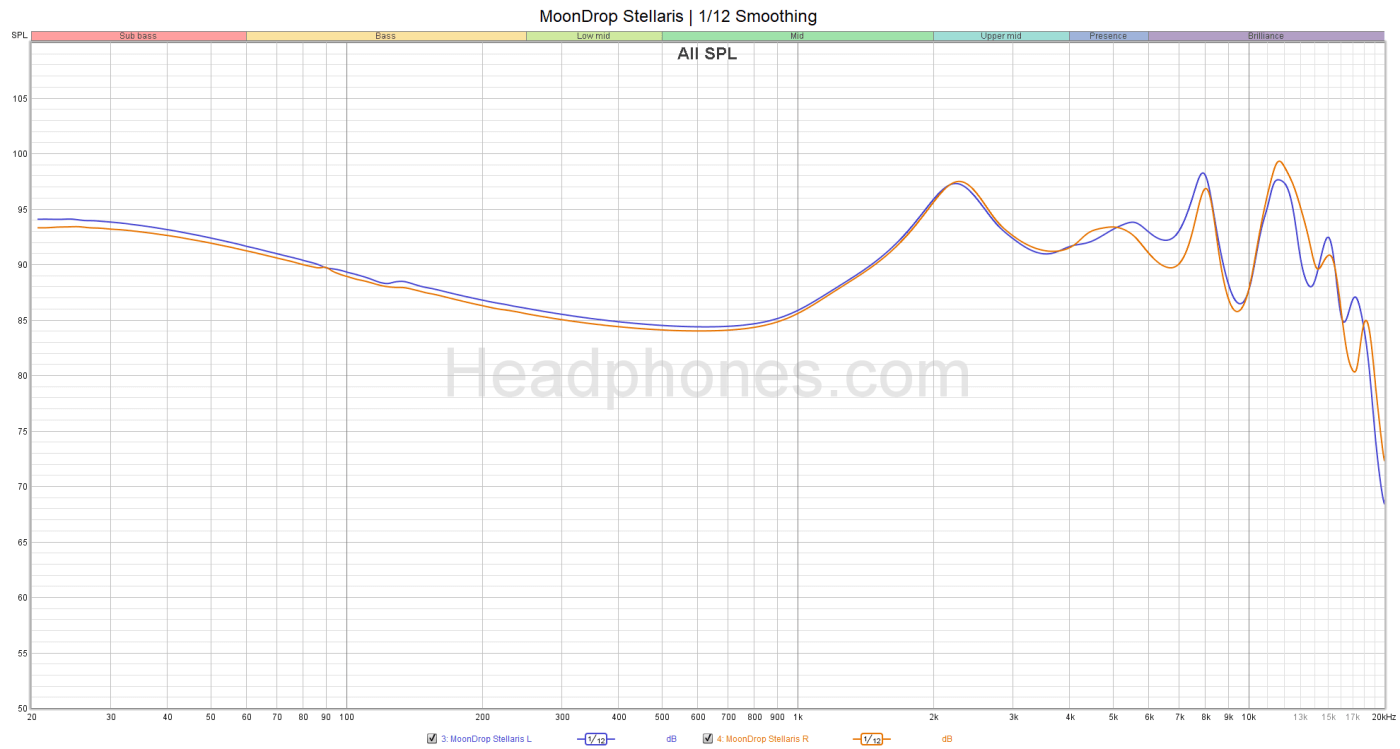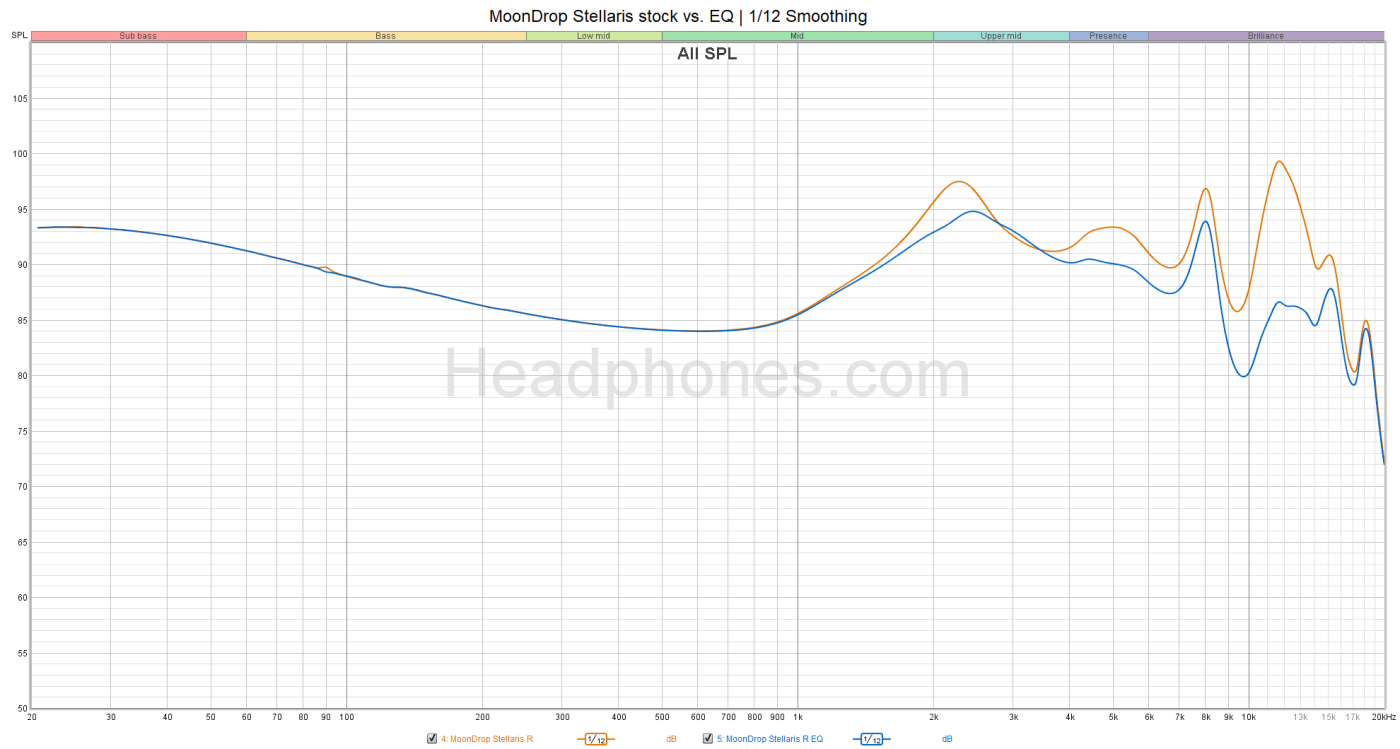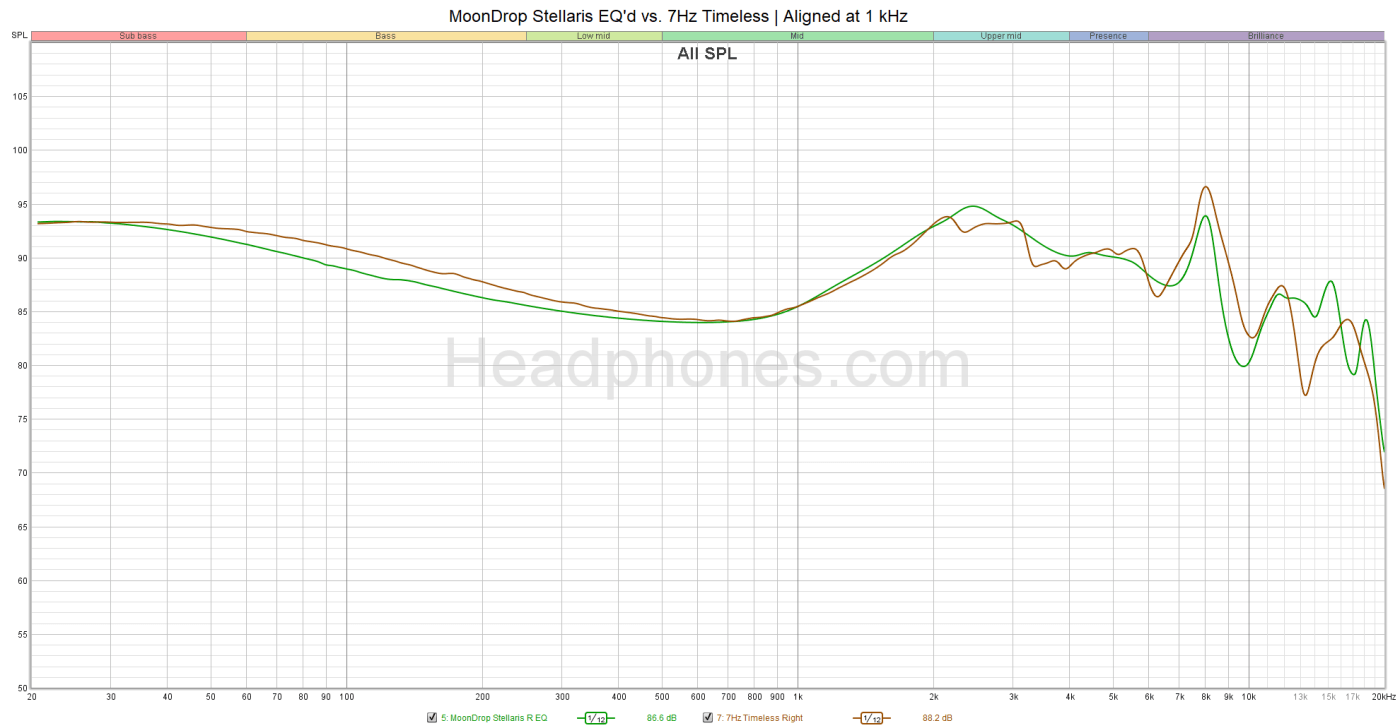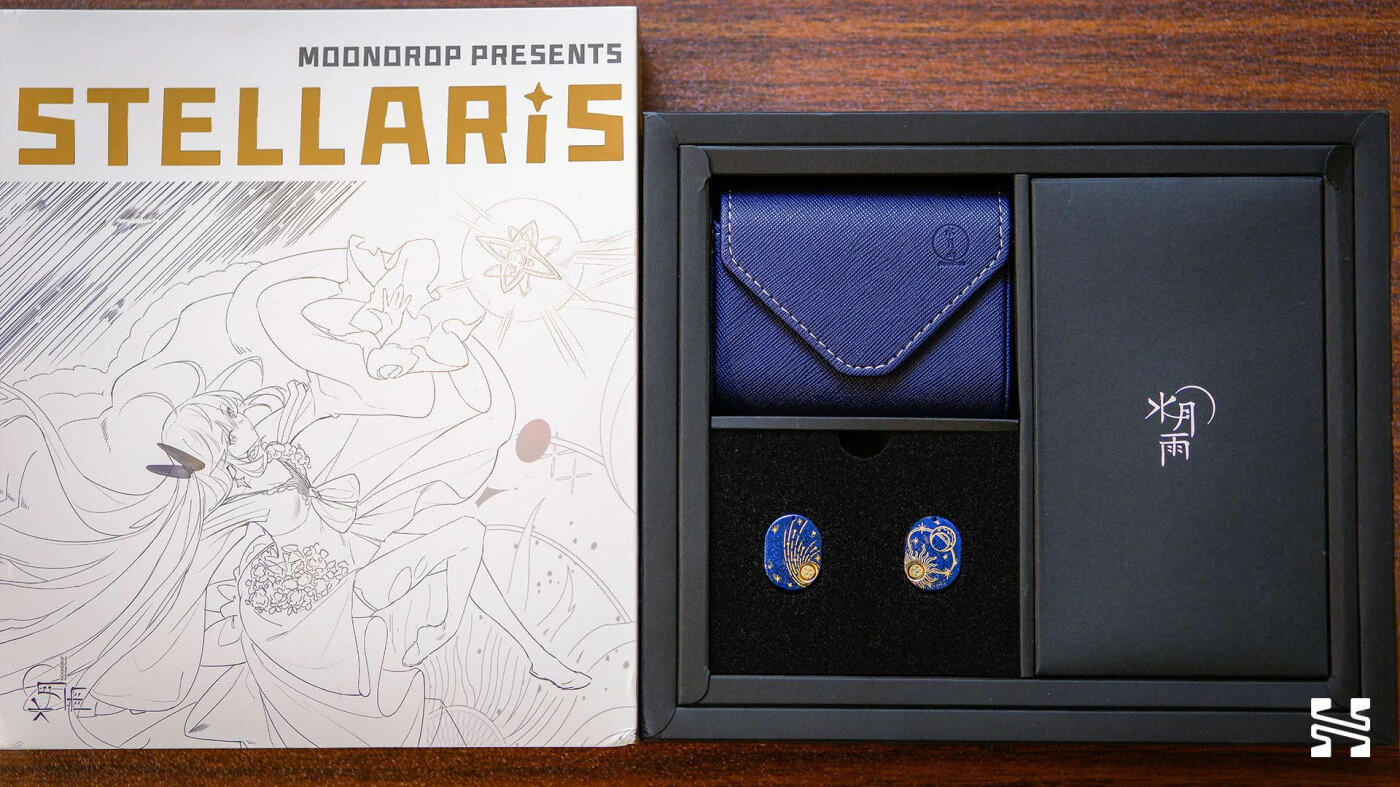MoonDrop Stellaris Review: Still Still (Not) Stellar

MoonDrop Stellaris Review
Review written by @Fc-Construct
Review unit provided by Linsoul
Introduction
In the past year, one technology has taken the IEM market by storm: planar drivers. This isn’t a new driver type for IEMs by any means – Audeze has their iSine line-up while the Tin HiFi P1 may arguably be credited as the first planar IEM released by a well-known ChiFi company. But it’s specifically these ~14.8 mm planar drivers first utilized in the 7Hz Timeless that was recognized as truly good. As glowing reviews for the Timeless poured in, other companies looked to capitalize on its success. With more than half a dozen new me-too planar IEMs soon poured into the market, the MoonDrop is the latest company to release their take on the planar craze with the $110 MoonDrop Stellaris. Despite being one of the leading IEM brands in the ChiFi landscape, MoonDrop generally doesn’t play the role of the innovator. Rather, they tend to take their time in the creation process to ensure novel technologies are well implemented and properly executed. At least, most of the time. Will the Stellaris be MoonDrop’s answer to the fierce competition in the planar space?
Note: The MoonDrop Stellaris uses a 14.5 mm planar driver. There is some confusion if the drivers in these new planar IEMs are all the same as some list 14.5 mm or 14.8 mm drivers. My speculation is that they’re all roughly the same and the variation in size comes down to a difference in how each company measures the size.
Sources Used: Apple USB-C dongle and Ferrum ERCO

MoonDrop Stellaris - Product Summary
- Reasons to buy
- It's Very Pretty
- Quick and Defined Bass
- Reasons not to buy
- Poor Tuning
- Piercing Treble
- Excessive Upper Mids
What’s in the Box?
The packaging of Stellaris has MoonDrop’s trademark aesthetic of an anime-inspired character art on the box. Open it and you’re greeted with the Stellaris, a nice little carrying case, a 2-pin cable, S/M/L foam tips, and MoonDrop’s new Ultra Clear Tips (U.C. Ear-tips) that was developed by their parent company Softears. These tips are similar to the Azla Xelastec tips with a sticky, grippy feel to them. That stickiness goes away after the first couple insertions as skin oils and dead cells layer on it (apologies for those eating). The stock cable is actually pretty good despite my initial reservations. It isn’t braided and has a soft molded ear-hook. Its sheathing feels nice with little tangling.
The deep iridescent blue and gold accents of the Stellaris’ shell are striking. Made fully of metal, there’s a decent heft to its weight. Unfortunately, its ergonomics is awkward. The Stellaris has a chunky shell that sticks out quite a bit. It has a rather long nozzle and a wide chamber. To top it off, it has a lengthy faceplate that makes it confusing how exactly it should be angled for fit. That said, I didn’t have too many issues getting it to fit. The nozzle is actually angled similarly to many IEMs so the faceplate and 2-pin connector simply points forward. Speaking of the nozzle, it’s fairly thick at 6 mm. While it has a foam filter inside, it doesn’t have any sort of outer filter to close off the nozzle.
Fun fact: The Stellaris isn't MoonDrop’s first star themed IEM. The first was the MoonDrop Starfield with a similar blue-gold motif, coincidentally released at $110 as well.
Funner fact: There also exists a popular blue, star-themed anime character whose signature song is called Stellar Stellar.
Sound and Frequency Response
 Frequency response of the MoonDrop Stellaris. Measurement taken with an IEC-711 clone microphone. Comparisons can only be made relative to other measurements taken by this specific microphone. A peak at about 8 – 10 kHz is likely an artifact of the measurement rig and may not exist as depicted here. Measurements above 8 kHz are not accurate. If possible, reference multiple measurements.
Frequency response of the MoonDrop Stellaris. Measurement taken with an IEC-711 clone microphone. Comparisons can only be made relative to other measurements taken by this specific microphone. A peak at about 8 – 10 kHz is likely an artifact of the measurement rig and may not exist as depicted here. Measurements above 8 kHz are not accurate. If possible, reference multiple measurements.
That’s a surprising graph from MoonDrop who’s well known for following their VDSF target curve. Here we get a V-shape with a serious upper treble peak. It’s essentially bass and sheer upper mids with a dose of piercing treble. If you’re coming something more neutrally tuned, the Stellaris is going to be painful. I needed to listen to it on and off over half an hour to acclimatize. With the right tips and an adjustment (i.e. brain burn in) period, it becomes tolerable. Though it’s still… problematic, to put it lightly.
Bass
Shockingly, the bass is the best part of the Stellaris. It’s punchy, quick, and responsive. It hits with a surprising amount of impact and extends very well. Those new Ultra Clear eartips form a very good seal in ear. It’s also well controlled with impressive nuance. It does lack some weight given its short decay pattern, however. Drums are punchy but it’s not all midbass. There’s an element of the subbass giving a good oomph behind each note. Bass guitars notes are tightly defined. While you wouldn’t really call it a bassy IEM given its upper mids and treble proclivities, the Stellaris definitely answer when called to be. Yes, I’m praising the bass of a planar IEM. It's not the best bass ever but given that the bass of IEMs generally tend to be fairly mediocre in general, the Stellaris’ is relatively outstanding.

Mids
As you might expect, the midrange is tinny. While the bass shelf extends far into the lower mids, it doesn’t do enough to balance out the excessive amount of upper mids present on the Stellaris. It has a staggering 12 – 14 dB pinna peak at 2.2 kHz that’s followed with 8 – 10 dB of upper mids/lower treble energy until 6 kHz. Needless to say, vocals are extremely forward on the Stellaris and can be rather shouty. Interestingly, the fact that it’s centered at 2.2 kHz doesn’t bother me too much. Sibilance is here in spades.
Given its upper mids heavy nature, the Stellaris is “lead melody” centric. Lead vocals tend to overshadow backing harmonies. The picking of acoustic guitars strings are emphasized over its strums. Lead lines of electric guitars and the crack of the snare clearly pop. Passages on the piano are distinct while filled chords take a backseat.

Treble
It’s time to address the elephant in the room. Well, one of several elephants that plague the Stellaris. The upper treble peak around the 11 – 13 kHz mark. I maintain that the severity of an upper treble peak depends on how much your music actually interacts with it. In the case of the Stellaris, sharp vocals and hats and cymbals interact with it a lot. Particularly with the hats, the treble of the Stellaris can be downright piercing when it hits the peak head on. Other times, it’s generally tolerable except for the fact that note timbre is exaggerated as a result of the peak. As usual, it depends on your treble tolerance and music. Energetic rock songs will be a challenge to listen to. Slower acoustic sets will be bright but not painfully so.
To MoonDrop’s credit, their new Ultra Clear tips do partially manage to attenuate the upper treble. Compared to my usual Azla Sednas, it’s not so much that it tames the peak but rather it makes it sound less turbulent and consequently a little less piercing. It’s still very bright, still very fatiguing, just slightly less so now.
Presentation
The technical performance of the Stellaris is on par or a little better than other planar IEMs of this class. Soundstage and imaging is fair, nothing to note here. Resolution is the Stellaris’ strong point but of course, tuning does play a major part (some might argue all) in the perception of technical prowess. The Stellaris’ frequency response does help with the sense of cleanliness and speed its driver has, particularly in the bass. When I EQ’d the Stellaris down to a more reasonable tuning, a lot of the qualities that made its bass stand out originally were diminished. Specifically, the tight definition it initially had is softened. At this point, some might point to the excessive treble as “fake resolution”. However, I would say it’s only partially true on the Stellaris. While notes definitely have that sheen of exaggeration, the resolution on the Stellaris is only really a small step up from the other planars like the 7Hz Dioko or Timeless. It still doesn’t compete with a benchmark like the MoonDrop Blessing 2.
Love our in-depth reviews?
We test and review hundreds of headphones every year. Sign up to get the latest news, reviews, guides, and more in your inbox. Join the 60,000+ like-minded audio lovers who love our newsletter!
EQ
If it isn’t already clear at this point, I wouldn’t recommend the Stellaris. However, if you DO already have one, I put together a simple EQ to tame the tuning. I kept the bass the same and only focused to relaxing the upper mids and abolishing the upper treble peak. I didn’t follow a specific target per se, just to what I felt was about right for this IEM.
Here are the filters:
|
Frequency |
2,200 |
3,000 |
5,000 |
11,500 |
12,500 |
|
Gain |
-4 |
2 |
-3 |
-7 |
-6 |
|
Quality (Q) |
3 |
2 |
2 |
2 |
2 |
|
Filter |
Band (bell) |
Band (bell) |
Band (bell) |
Band (bell) |
Band (bell) |

Admittedly, there’s still a lot of upper mid energy. I did actually test a milder version of this EQ with less upper mids but found that it needed the extra gain to balance out the bass. The treble is well reigned in now. It doesn’t lose its sense of brilliance or sparkle but it’s a lot smoother. I compared this against the 7Hz Dioko. I found that the Dioko was better tuned in the mids but preferred the added vividness this EQ has. The treble here performs better than the Dioko’s which has a couple of peaks of its own.
 Here's how it compares to the 7Hz Timeless. I didn’t reference the Timeless when making this EQ, but it turned out fairly similar, with less midbass. On a technical level, the Stellaris is just a smidge better I'd say.
Here's how it compares to the 7Hz Timeless. I didn’t reference the Timeless when making this EQ, but it turned out fairly similar, with less midbass. On a technical level, the Stellaris is just a smidge better I'd say.

Should You Buy It?
No. While the MoonDrop Stellaris is a very pretty product, while it’s a very interesting product, it fails as an audio product in its most important dimension: tuning. There are three (?) things that the Stellaris has going for it: it’s one of the cheapest planar IEMs, it has a good technical foundation, and it’s beautiful with an anime picture on the box art. If you absolutely want a planar IEM and can’t get the 7Hz Dioko for whatever reason, be it fit or aesthetics, the Stellaris with EQ is almost a reasonable alternative option. Then again, there are other options such as the Tin HiFi P1 Max or Shuoer S12 around the same price. I guess what I’m trying to say is if you willingly buy the Stellaris, you know what you’re doing and all the more power to you.
_____________________________________________________________________
Join the discussion for all things audio on the official Headphones.com Discord, or join our community forums!


